Drawing on Roland’s six-decade history the updated Gaia focusses on user-friendliness and vintage sounds, twisted with a few modern updates. Greg Scarth finds out more.
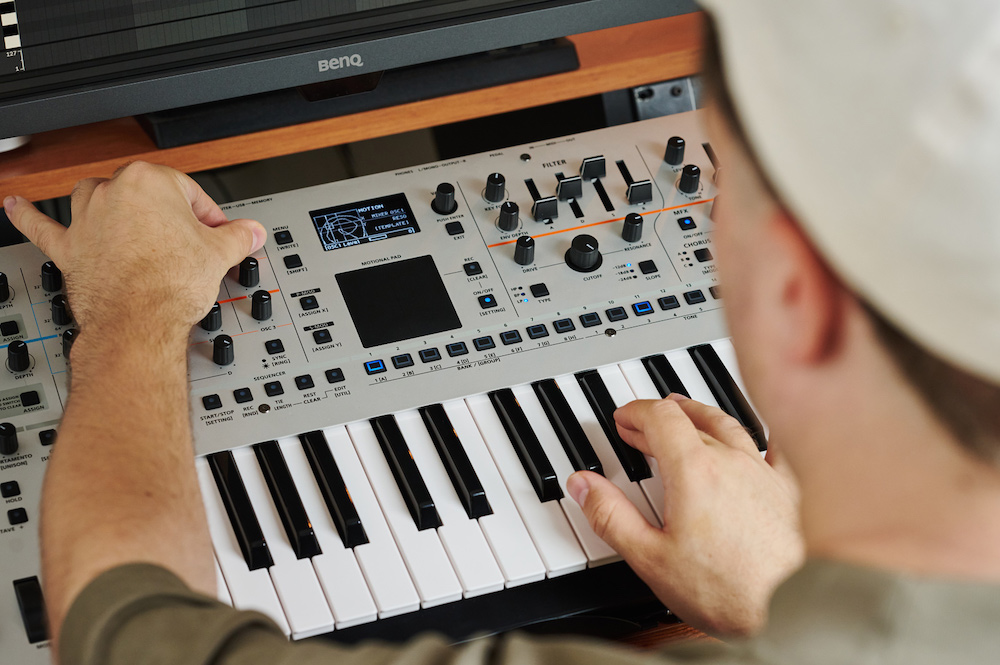
The roots of Roland’s Gaia synths can be traced back a long way. The name was first used for the SH-01 Gaia in 2010, but that synth was in some ways an evolution of 2006’s SH-201, and that SH prefix in both synths’ names harks back all the way to Roland’s very first analogue synths from the early 1970s, such as the SH-1000. Clearly there’s a deep strand of Roland DNA being tapped into here. The new Roland Gaia 2 is an unapologetically digital synth, designed with an emphasis on hands-on control but also drawing heavily on that deep analogue tradition from the iconic Japanese brand. This one has a lot to live up to.
Released in 2010, the original SH-01 Gaia proved to be quite a divisive synth. At a time when interest in vintage analogue synthesis was undergoing a resurgence, the SH-01 was a digital instrument which used physical modelling to recreate virtual analogue sounds. At the time, many synth fans clamoured for genuine analogue, a demand Roland have almost universally ignore ever since. Nevertheless, the SH-01 found favour with artists from Disclosure to Grimes for its easily accessible take on vintage Roland tones. With the Gaia 2, Roland have leaned even further into that unashamed digital character, adding wavetables to the formula as well as a few timely updates to the workflow, interface and feature set.
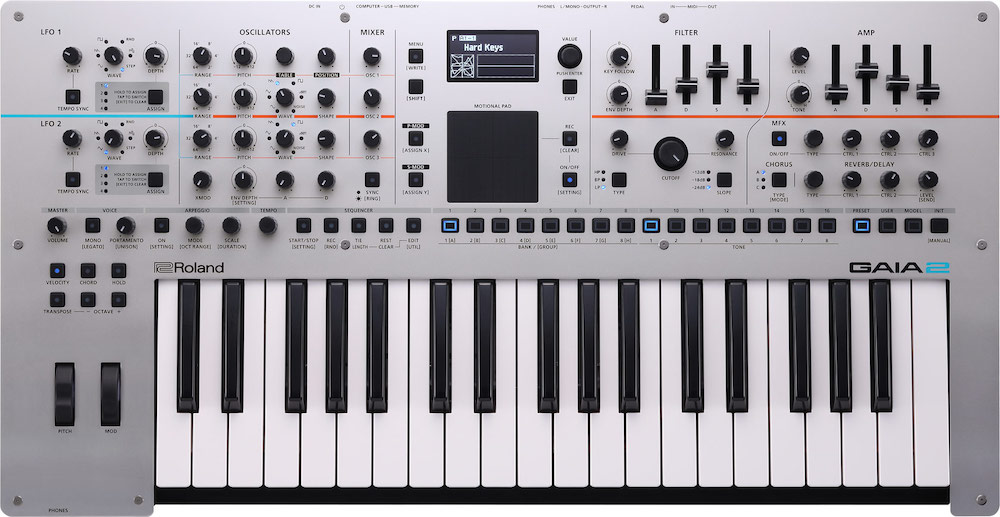
As you’d expect from Roland, the Gaia 2 feels like a very well made instrument as soon as you take it out of its box. It’s a pretty light synth at just 4.4 kg, although its plastic case and aluminium front panel feel solid enough that you’re not scared it might be fragile. It’s notable that Roland have used a full-size keybed here, with the 37 synth action keys bucking the trend for mini-keys adopted by so many other manufacturers in this mid-sized synth bracket. The controls are all clearly labelled and nicely spaced too, giving instant access without being fiddly – not to be underestimated given the Gaia’s emphasis on tweakability.
The front panel of the Gaia 2 gives a pretty clear indication of the way the whole thing works. Over on the left-hand side, a couple of LFO sections sit alongside three oscillators, one of which is a wavetable design and the other two being virtual analogue VCOs. Through the mixer section and leaping across the main screen and Motional Pad (more of which later), you hit the dedicated filter and amp sections, each with their own envelope generators, then the master effects sections. All very clear, simple and in keeping with the classic analogue approach. The benefits of digital mean that you also get up to 22-voice polyphony depending on sound settings, which is more than most analogue synths can manage.
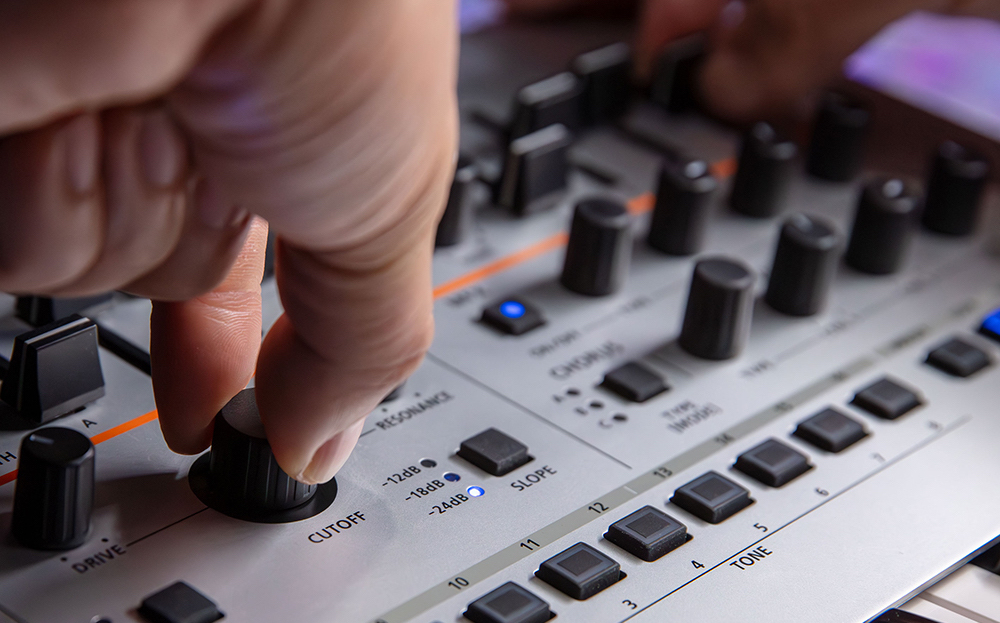
So how does it sound? Very good indeed. The heart of the synth is its analogue-inspired soul, and that’s immediately obvious as you flick through the bank of 256 well crafted presets, which draw heavily on the vintage SH synth tones as well as putting the effects section to good use with effects inspired by some of Roland’s vintage models. It would be easy to be elitist at this point about Roland’s emulations of their classic sounds – after all, we’ve heard similar virtual recreations of some of these vintage synths and effects for a few decades now – but these really are truly iconic tones. Sit down with the Gaia 2 for 15 minutes and we challenge you not to find something reminiscent of iconic house basslines, trance supersaw leads, shimmering techno pads and much more. From that point, get creative with the wavetable oscillators and you’ll soon find that you can push it into entirely new territories as well as drawing for the classics.
It’s worth noting that the Gaia 2 also gives you the option to load Roland’s Model Expansions via Roland Cloud, and the keyboard comes pre-loaded with an emulation of the classic 80s SH-101, although we think this is probably a nice bonus rather than the main reason you’d opt for the Gaia 2.
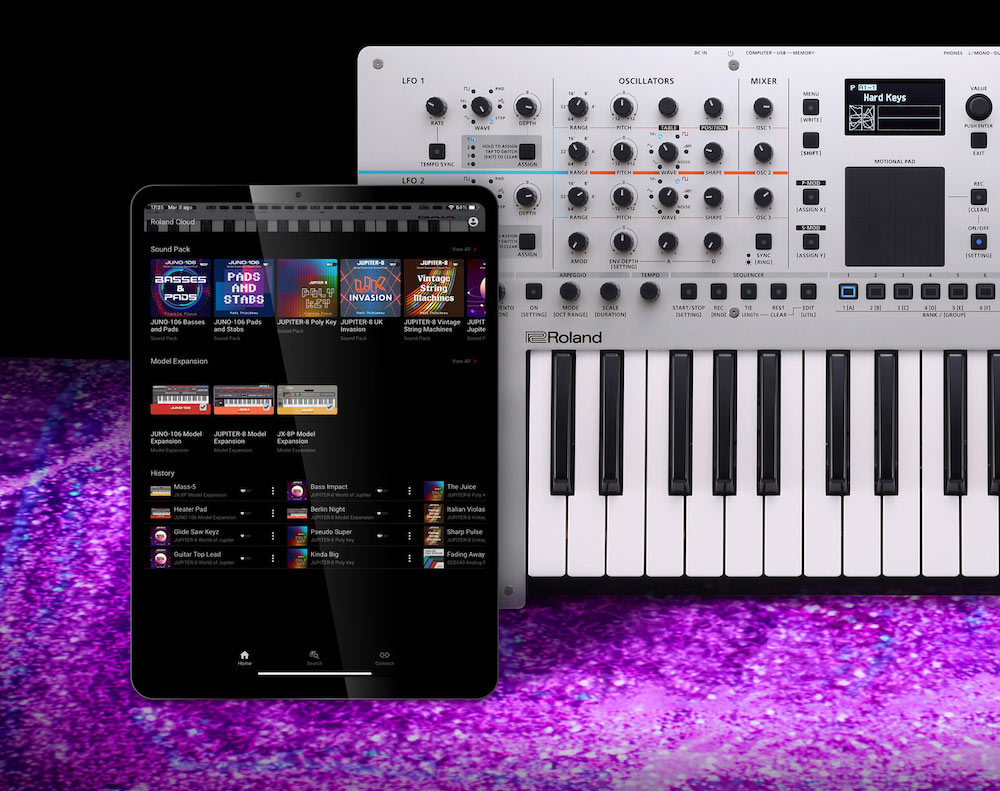
There’s a lot to be said for the Gaia’s workflow as well as the sound itself. Broadly speaking, the Gaia approach is to give you access to as much of the core functionality as possible via the front panel, without the need to dive into menus. But that’s not to say there isn’t depth here. The Motional Pad is a new one for Roland, effective an X/Y pad but one which can also be recorded and looped like an LFO or triggered with each key press. This proves particularly effective for modulating the phase or shape of the wavetable oscillator, allowing you to add subtle or extreme modulation effects, either sitting behind virtual analogue sounds or riding on top of them. There’s also a nice arpeggiator and sequencer hidden inside, allowing you to step sequencer or record live and automate four lanes of synth parameters.
In terms of overall pros and cons, this is where the Gaia 2 really defines where it sits in Roland’s product range and what it’s trying to be. The full-size keybed feels great, but notably doesn’t feature aftertouch. Then again, neither did most of Roland’s classic analogue synths which inspired the approach here. The new OLED screen is a clear and effective way to access menu functions, which reinforces the idea of giving user-friendly control of features. There’s some overlap with the SH-4d, which is a bit more capable in terms of multitimbrality, custom wavetables and the option to add samples, but the Gaia interface beats the SH-4d hands down. Meanwhile, it’s a substantial leap up in price to the Jupiter-Xm or Juno-X, which use Roland’s flagship Zen Core synth architecture. As such, the Gaia 2 sits in a nice little niche of playability and accessibility.
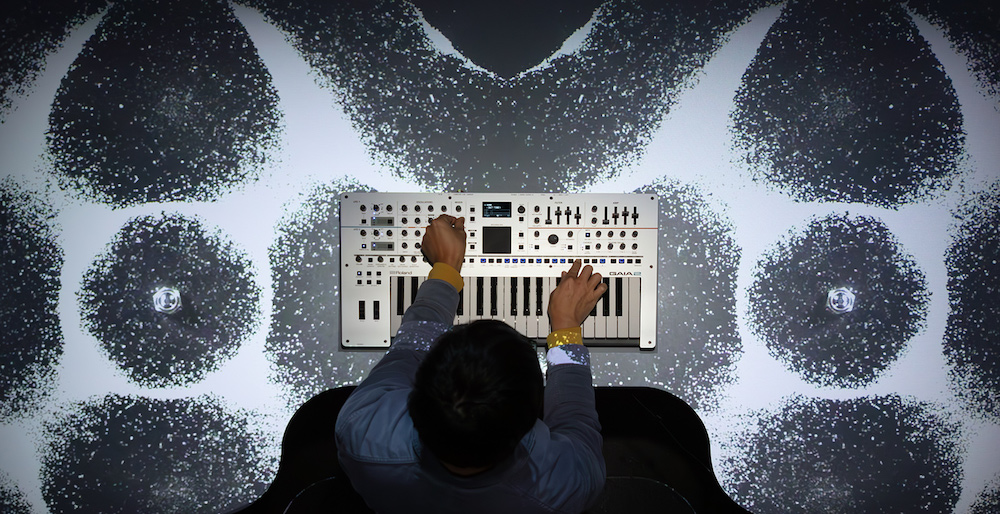
In summary, the Gaia 2 is a synth with a lot of impressive strengths. It’s not a groundbreaking new approach to synthesis by any means, but a refinement of Roland concepts which go back six decades. The difference between the Gaia 2 and something like 1973’s SH-1000 is night and day, of course, but there are still shared traits in terms of sound as well as user-friendliness. As for alternatives, Korg’s Minilogue XD offers a genuinely analogue take on the concept of wavetable-analogue hybrid sounds, while ASM’s Hydrasynth Explorer goes heavily into the wavetables. Neither can match the Gaia 2 for polyphony, but more importantly neither one quite captures the immediacy of the Roland offering. If you’re looking for vintage-inspired tones and user-friendliness, the Gaia 2 makes a very good starting point.
Greg Scarth
More info/buy